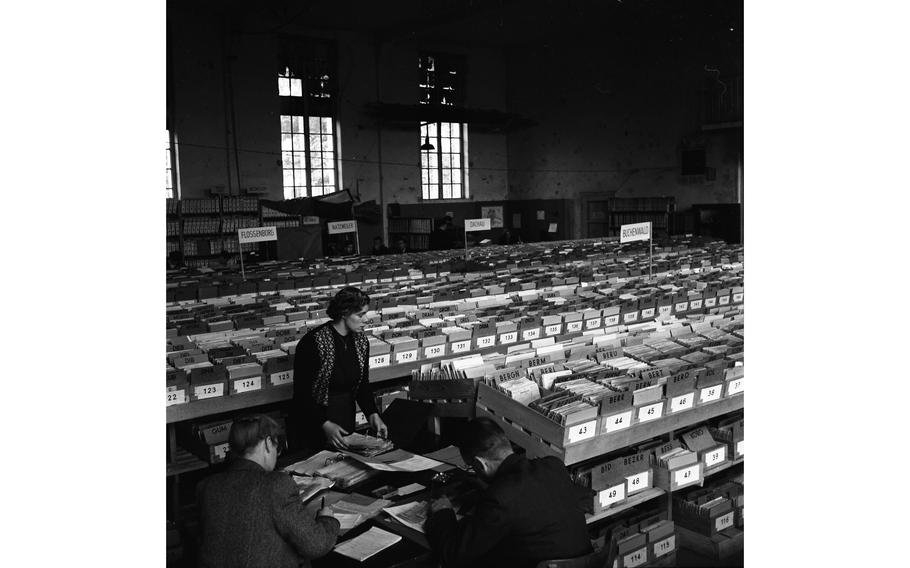
(George Penn/Stars and Stripes)
Esslingen, West Germany, Sept. 27, 1952: Clerks and investigators search through row upon row upon row of records in the massive factory floor-turned-records room of the International Tracing Service’s offices. Signs marking the records from the various Nazi concentration camps can be seen in the back.
Digging through the Child Search master index of some 204,000 cards, which include 70,750 birth certificates, the investigators searched for non-German children separated from their families during the war in an effort to reunite them with their families.
Read Stars and Stripes’ article on the post-war efforts of reunification by the ITS here.
The International Tracing Service morphed into the Arolsen Archives and its staff continues the work their 1950s colleagues began. “The Arolsen Archives are committed to preserving their unique collection of documents on Nazi persecution and to making them accessible worldwide. We search for the traces of victims and survivors of the National Socialist terror regime and, even today, we are still helping to reunite families torn apart by the Holocaust, the persecution of minorities and forced labor.”
For more information about the organization, its archives, and work, visit their website.